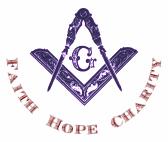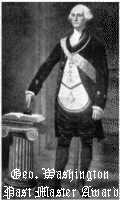
 I have been doing some research for a paper I've been working on, and while doing so turned to
The Origins of Freemasonry: Scotland's
Century, 1590-1710 by David Stevenson. I picked this book up a while back, but for some reason never finished
reading it. I was stunned to find that it contained a wealth of information and an incredibly bibliography. Enough
information, in fact, that it has become an excellent starting point for the remainder of my paper. If this book isn't
a part of your lodge's library (or, if I may be so bold to insist, part of your Masonic library), it really
needs to be. Buy it. No, really.
I have been doing some research for a paper I've been working on, and while doing so turned to
The Origins of Freemasonry: Scotland's
Century, 1590-1710 by David Stevenson. I picked this book up a while back, but for some reason never finished
reading it. I was stunned to find that it contained a wealth of information and an incredibly bibliography. Enough
information, in fact, that it has become an excellent starting point for the remainder of my paper. If this book isn't
a part of your lodge's library (or, if I may be so bold to insist, part of your Masonic library), it really
needs to be. Buy it. No, really.
Before you leave the page figuring me for some kind of money-grubbing fraud, let me tell you why. Stevenson does a remarkable job of tracing the roots of Freemasonry back to the tail end of 16th century Scotland. He builds on the scholarly work of Dame Frances Yates to build an exciting and convincing history of the Craft. This is no half-researched pseudo-Templarism, either, but a true piece of scholarly work. Like I said earlier, it belongs in every Masonic library.
 Today's title actually ties in quite nicely with Origins. One of Stevenson's theses is
that Renaissance Hermeticism, Neoplatonism, and especially Rosicrucianism were all powerful influences on the men that
transformed the Fraternity from one of operative masons to speculative ones. Stevenson, of course, is not alone in
these thoughts.
Today's title actually ties in quite nicely with Origins. One of Stevenson's theses is
that Renaissance Hermeticism, Neoplatonism, and especially Rosicrucianism were all powerful influences on the men that
transformed the Fraternity from one of operative masons to speculative ones. Stevenson, of course, is not alone in
these thoughts.
M W
W Bro
Bro Fabio Venzi, Grand Master of the Regular Grand Lodge of
Italy, writes in his paper, "The Influence of
Neoplatonic Thought on Freemasonry",
Fabio Venzi, Grand Master of the Regular Grand Lodge of
Italy, writes in his paper, "The Influence of
Neoplatonic Thought on Freemasonry",
Why, the choice of Neoplatonic philosophy, as the foundation of Masonic thought? Which of the Neoplatonic concepts, do we find in the philosophy upon which, Masonic allegories and symbolism, are based? Let us begin, with one the most beautiful images, that Neoplatonism has given us: the "openness to contemplation". This concept, finds perhaps its most effective translation, in the German word, "aufgehen", to disclose, to open one's self.Steven's inclusion of Rosicrucianism in the list of Freemasonry's influences is a notable one. It wasn't until 1614 that Isaac Casaubon showed that the Corpus Hermeticum was not the pre-Christian prophetic work it was previously believed to be, which means that Freemasonry's 16th century roots drew upon that work and the philosophies deriving from it believing them to be of a different nature than they really are. Rosicrucianism, Stevenson points out, was a bold and effective effort to remove the pagan elements of Hermeticism and incorporate them more fully into Christianity. Masons should remember that while the Fraternity is built on a basis of religious tolerance, the removal of most overtly Christian elements from the ritual did not occur until the "healing" of 1813. Even today, traces of Christian symbolism remain in regular American Blue Lodge rituals.
 And before I forget, yesterday's Fellowcraft degree went very well. The lecture, as always, was a great thing to
experience. The brother, who was performing it for the first time, did such a great job that I would have sworn he was
a seasoned veteran. Afterward we all retired to a local restaurant and ate and drank late into the night. The
restaurant, I think, was quite surprised to see a group of tuxedo-clad men showing up so late at night, but they were
still quite friendly.
And before I forget, yesterday's Fellowcraft degree went very well. The lecture, as always, was a great thing to
experience. The brother, who was performing it for the first time, did such a great job that I would have sworn he was
a seasoned veteran. Afterward we all retired to a local restaurant and ate and drank late into the night. The
restaurant, I think, was quite surprised to see a group of tuxedo-clad men showing up so late at night, but they were
still quite friendly.



